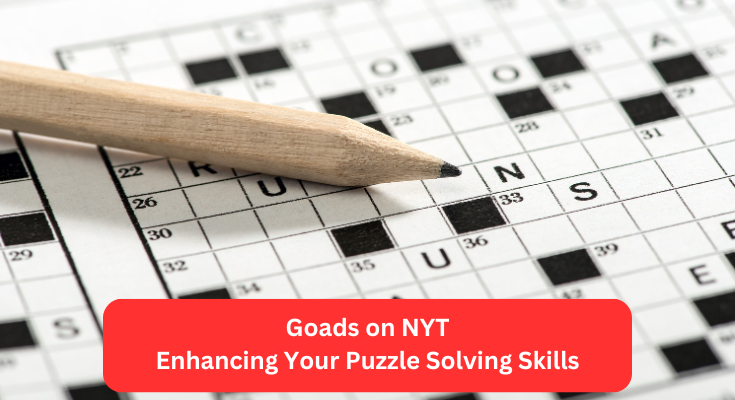Goads on NYT Enhancing Your Puzzle Solving Skills
The New York Times (NYT) crossword is a beloved daily ritual for many, offering a mix of challenge, entertainment, and intellectual stimulation. Among the array of clues presented, “goads” stand out as particularly crafty prompts designed to nudge players toward answers through clever obfuscation and indirect hints. This guide explores the essence of these goads, providing strategies to master them, and insights into their role in the grander puzzle arena.

Understanding Goads in NYT Crosswords
Goads in NYT crosswords are clues that require solvers to think differently. They often use puns, hidden meanings, or require a shift in thinking that challenges the solver’s linguistic and cultural knowledge. Unlike straightforward clues, goads may involve deeper layers of reasoning, asking solvers to read between the lines or think beyond the obvious.
Strategies for Tackling Goads
- Contextual Clues: Always consider the clue in the context of the puzzle’s theme if there is one. Themes can provide essential hints towards deciphering goads.
- Linguistic Flexibility: Play around with different interpretations of the words used in the clue. Homonyms, homophones, and puns are common in goads.
- Crossword Tools: Utilize crossword solvers, dictionaries, and thesauruses to explore different dimensions of a clue that may not be immediately apparent.
- Break It Down: Analyze each component of the clue separately before trying to synthesize these elements into a coherent answer.
- Think Aloud: Sometimes, discussing the clue aloud can help in recognizing phonetic cues or leading to a sudden realization of the clue’s intent.
Conclusion
Goads on NYT crossword puzzles are not just obstacles. But opportunities to delve deeper into the rich language and cultural references that crosswords offer. They test solvers’ abilities to think outside the box and decipher clues from a new angle. With the right strategies and a bit of practice, even the most bewildering goads can be conquered. Leading to a more enjoyable and fulfilling puzzle-solving experience.
FAQs about Goads on NYT Crosswords
What exactly are goads in the context of NYT crosswords?
Goads are challenging clues that push solvers to think creatively or laterally. They often require solvers to interpret clues in unconventional ways, making use of puns, hidden meanings, or complex wordplay.
Why are goads significant in crossword puzzles?
Goads elevate the solving experience by challenging the intellect and creativity of the solver. They add depth to the puzzle and make the solving process more rewarding.
Can goads be found in every NYT crossword?
While not every puzzle will label its more challenging clues as goads. Most NYT crosswords include a variety of complex clues. That serve the same functionto challenge and engage solvers at a higher level.
What are some common types of goads found in NYT crosswords?
Common types include puns, misleading syntax, abbreviations, or clues that require knowledge of less common uses of words or phrases.
How can I improve my skills at solving goads?
Practice is key. Regularly solving NYT crosswords will help you familiarize yourself with the constructors’ styles and common trickery. Also, discussing puzzles with fellow enthusiasts can offer new perspectives and solving techniques.
What should I do if I’m stuck on a goad?
Take a break and return with fresh eyes, consult a crossword dictionary. Or ask for hints from friends or online forums without spoiling the answer outright.
